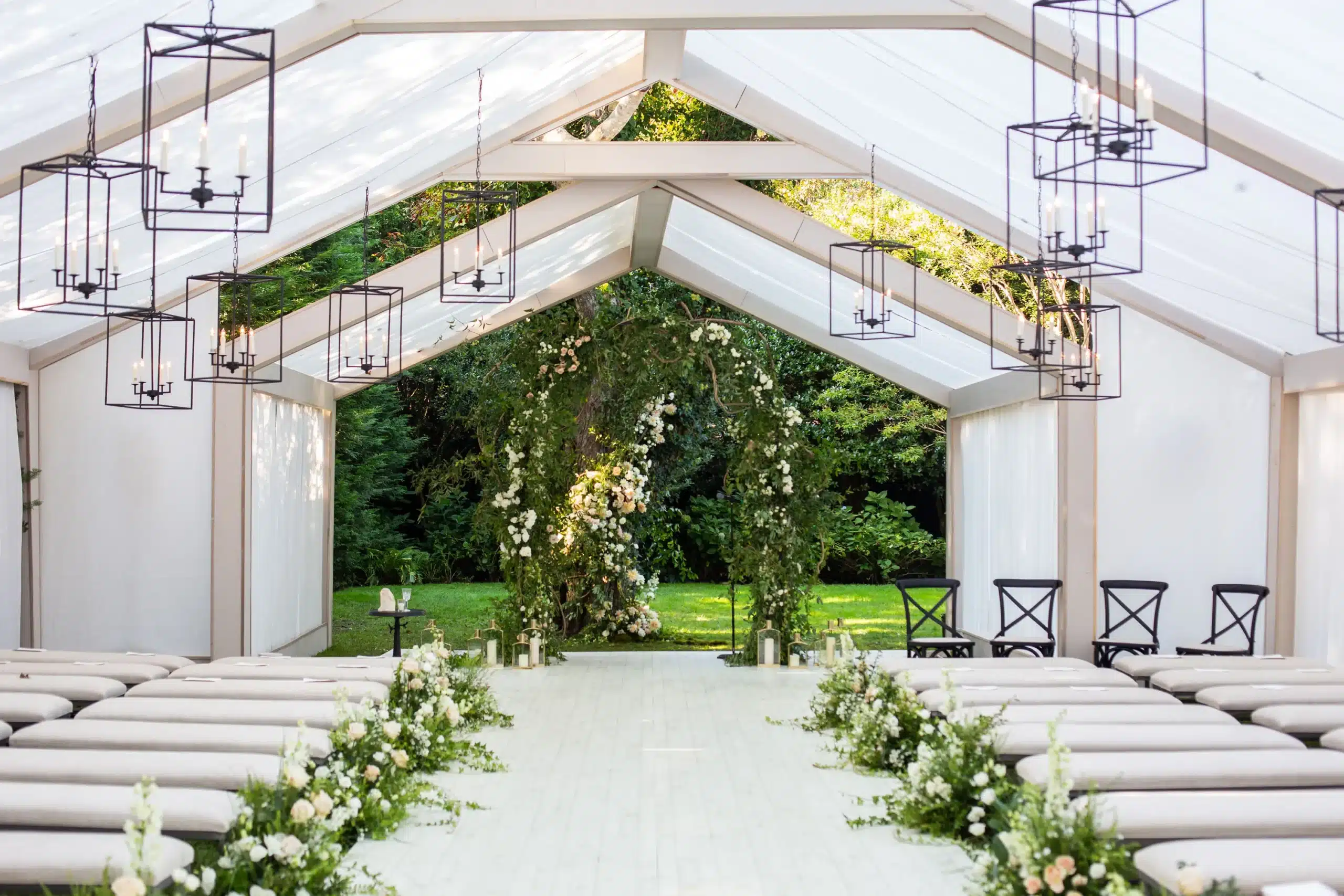Choosing between frame tents and Century Pole Tents goes far beyond aesthetics—it’s about tent structure, flexibility, and the quality of the tent materials used. This guide breaks down what matters most to event planners and venues: from efficient tent setup to flexible event tent layouts that can transform outdoor spaces into unforgettable experiences. Clear span tents, especially frame tents, eliminate internal obstructions and offer versatile designs ideal for weddings, galas, and corporate events.
They’re built with high-grade, weather-resistant fabric and reinforced framing to ensure long-term performance and tent safety. Whether you’re preparing for a weekend celebration or a large-scale production, smart tent installation and tent anchoring can make all the difference. For high-impact outdoor event tents, frame tents offer the freedom and strength today’s events demand.
Key Takeaways
- Frame tents offer clear-span interiors without center poles, maximizing space and flexibility for event layouts.
- Their reinforced aluminum or steel structures distribute weight evenly and withstand tough weather conditions.
- Durable vinyl or polyester fabrics resist UV damage, water, and abrasion for longer-lasting use.
- Modular design and lightweight materials reduce setup time, transport needs, and crew size.
- Skyline Tent Company ensures safe, compliant installations with built-in features like fire-retardant coatings and anchored frames.
What Are the Core Structural Differences Between Frame Tents and Century Pole Tents?
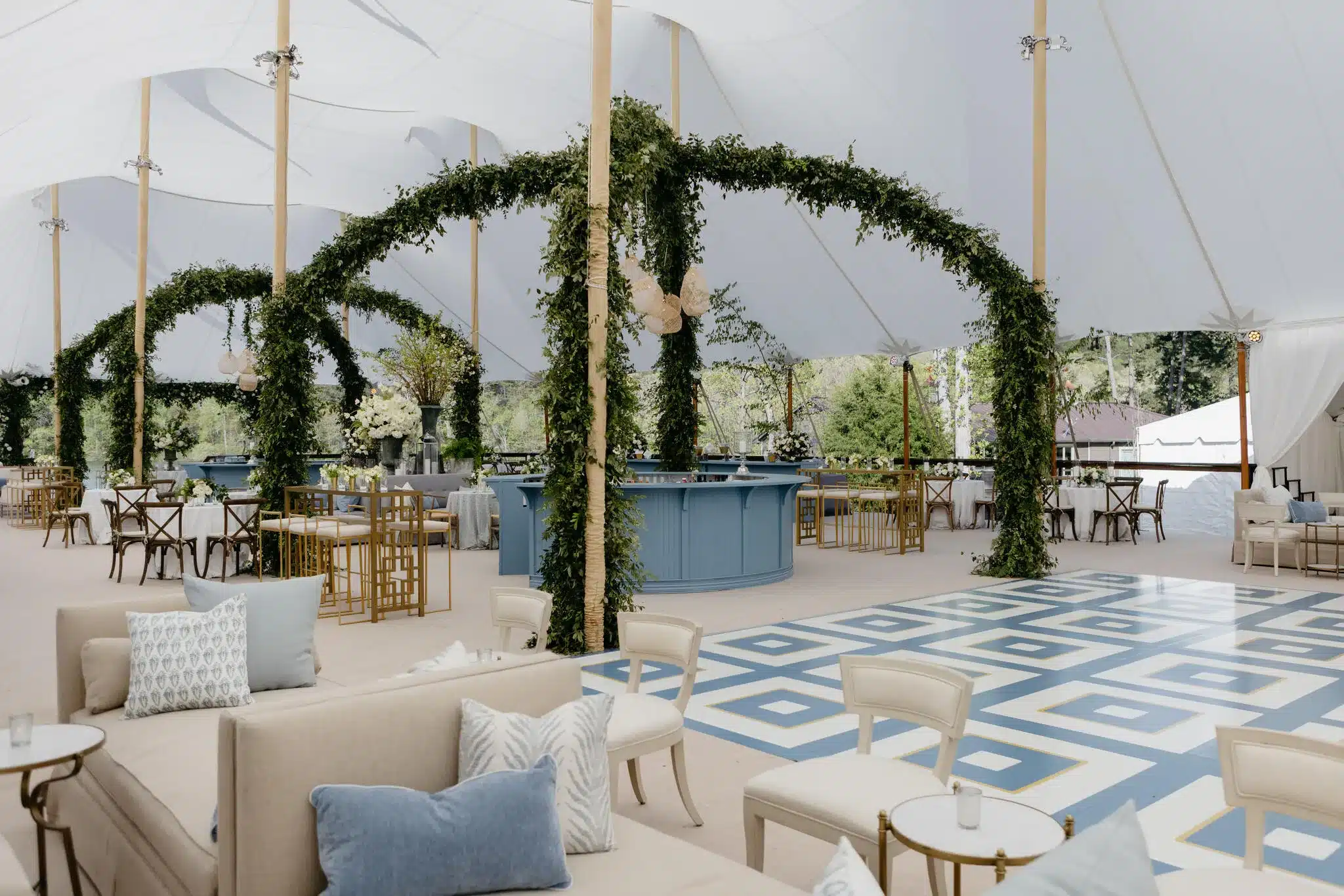
Frame tents and Century Pole Tents differ significantly in their structure, function, and overall event application. Frame tents use an external skeleton made of engineered metal to support the canopy, eliminating the need for center poles. In contrast, Century Pole Tents rely on central and perimeter poles for support, creating a peaked roof with internal obstructions. Frame tents offer open, adaptable layouts and consistent coverage across varying terrains. Meanwhile, Century Pole Tents are favored for their visual impact and traditional styling. Each option suits different needs depending on space, design flexibility, and installation logistics.
Interior Clearance and Event Layout Flexibility
Frame tents feature a completely open interior space, free from any internal supports, making them ideal for versatile floor plans. This allows for unbroken guest views, flexible seating layouts, and unobstructed sightlines for entertainment setups. Century Pole Tents, on the other hand, include central poles that can limit configuration options and movement. For events needing clean design lines and multifunctional areas, frame tents are often preferred. Their structure makes it easier to install custom elements like stages, bars, or large focal displays. Whether accommodating large groups or creating segmented areas, interior clearance plays a vital role in the final setup.
Support Structure and Stability Methods
The core structure of frame tents uses external beams, tension systems, and secure connectors to remain upright without interior poles. They are often anchored with weighted bases or stakes, providing strong lateral stability. Century Pole Tents rely heavily on high-tension anchoring combined with tall center poles to achieve their signature look and structure. However, this central support system demands more space and meticulous alignment. Frame tents can be installed closer to buildings or obstacles, while Century Pole Tents require more clearance due to guy lines and perimeter tension. Each structure’s support method affects its placement and wind resistance.
Setup Space and Ground Requirements
Frame tents require less surrounding space for anchoring, making them suitable for tighter event sites or urban settings. Because they don’t need tension ropes extending out from the tent, their footprint is confined to the tent’s actual size. In contrast, Century Pole Tents need more open area around them for safe stake placement and structural balance. Ground surface also impacts setup choices—frame tents can be installed on asphalt, concrete, or uneven ground with ballasts or anchor plates. Pole tents typically require soft ground for proper staking. Understanding the ground type and available space is critical when selecting the right tent.
How Does Frame Tent Design Enhance Stability and Wind Resistance?
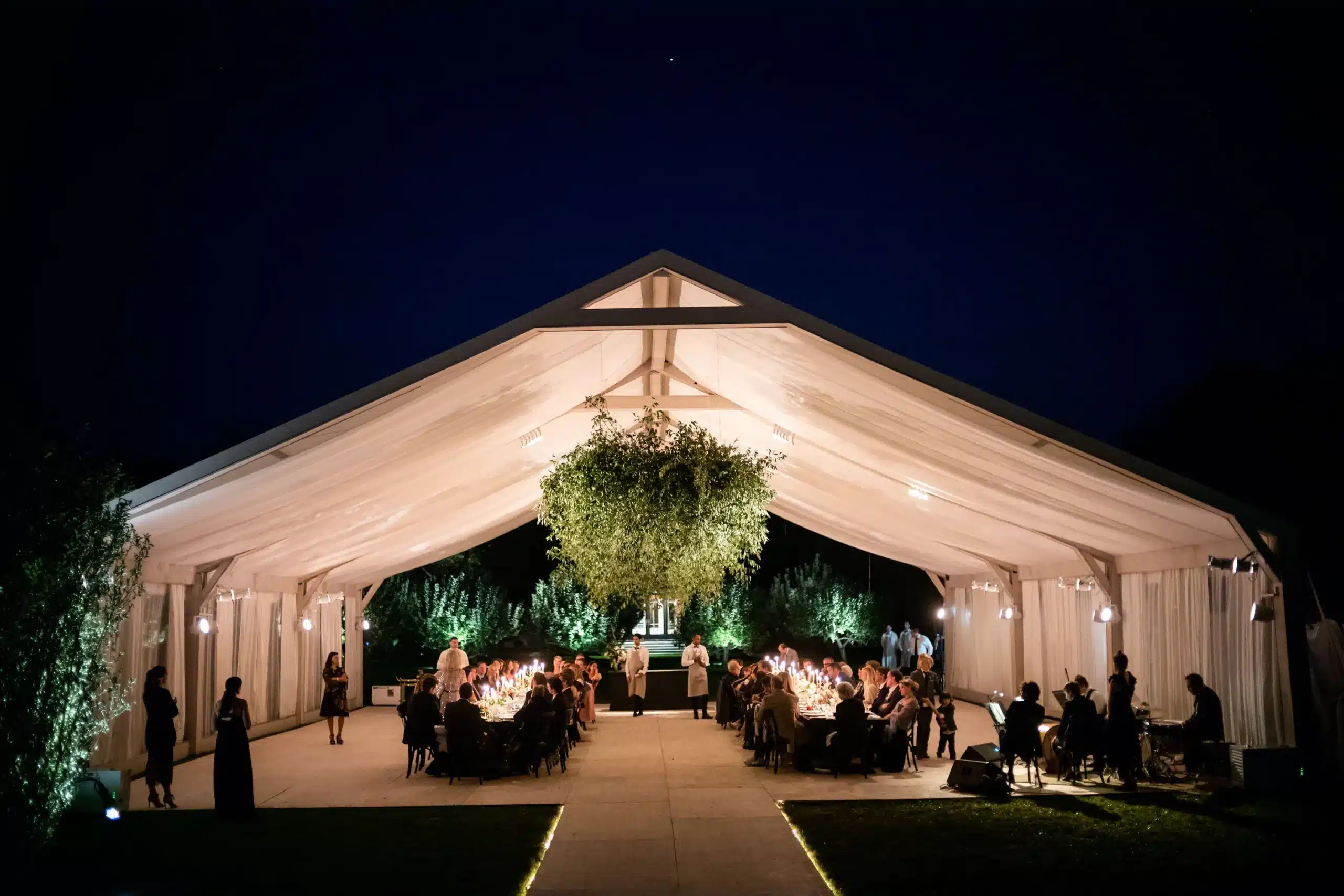
Frame tents are engineered for strength and performance in changing weather conditions. Their structural design includes external metal frameworks that create a sturdy skeleton, evenly distributing tension across the entire tent. This system helps the tent stay grounded and aligned even during gusty winds or unpredictable weather. Unlike pole tents that depend on ground-staked tension and central poles, frame tents manage loads across reinforced connectors and perimeter anchoring. This allows them to perform reliably on varied surfaces, including hardscapes. The ability to remain secure with minimal flex makes frame tents a dependable choice for large-scale or long-duration outdoor events.
Even Tension Distribution Through External Framing
Frame tents maintain stability using a rigid perimeter frame that supports the roof and sidewalls. This frame evenly distributes tension across all points of the tent, eliminating pressure buildup at single stress points. The structured layout resists twisting or sagging, even during setup or takedown. With no reliance on center poles for support, frame tents reduce the chance of leaning or collapse due to uneven loads. The stability they provide is especially useful in areas with variable surface conditions. Their external framing also keeps the fabric tight and aligned, improving both the tent’s appearance and its resilience during events.
Secure Anchoring and Ground Adaptability
Frame tents use specialized anchoring systems such as weights, plates, or ground stakes that adapt to the site’s surface. Whether set up on grass, asphalt, or concrete, these tents can be safely stabilized without compromising their structure. Anchors are positioned along the frame, creating multiple points of contact for improved balance. Unlike guy lines, these anchors do not require large clearance zones, which keeps the setup area compact. This makes them ideal for tight locations or paved venues. Their reliable anchoring also enables the tent to resist wind uplift and shifting, protecting both the structure and the people beneath it.
Wind Resistance Without Interior Supports
Frame tents handle wind loads efficiently due to their compact, enclosed structure and lack of interior poles. Their design directs wind pressure along the external frame, preventing fabric flapping or structural bending. With no tall central poles to catch gusts, frame tents are more aerodynamic and less prone to sway. This design supports performance in open areas where wind exposure is high. The absence of internal supports also means fewer failure points under stress. Combined with tensioned fabric and solid anchors, frame tents maintain their shape and security during variable weather, offering peace of mind at outdoor events.
Why Do Frame Tents Offer Clear-Span Interiors Compared to Century Pole Tents?
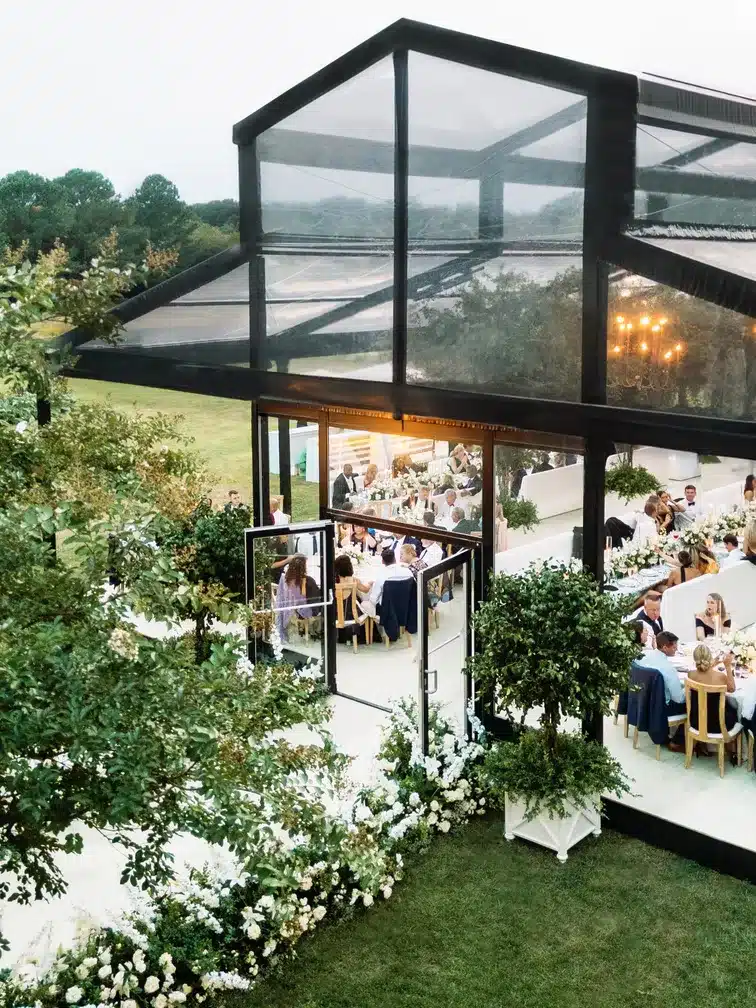
Frame tents deliver fully open interiors by using an external support system that removes the need for center poles. This structural difference allows for maximum usable space, ideal for events requiring clear walkways, large group seating, or seamless visual flow. In contrast, Century Pole Tents rely on tall interior poles for support, which create physical and design obstructions. With frame tents, no poles interfere with seating plans, stage setups, or lighting installations. Their clear-span design supports greater freedom in both floorplan and aesthetics. This layout makes frame tents highly suitable for formal and high-capacity gatherings.
No Interior Poles to Block Layouts or Views
The absence of interior poles in frame tents means every square foot can be used without navigating around support beams. Whether it’s a long banquet table, a central dance floor, or a presentation stage, planners have complete control of layout. Guests also enjoy open sightlines, improving the overall visual appeal and comfort of the event. There’s no need to design around large poles that disrupt seating or focal points. This allows for a more immersive guest experience and cleaner photos. From formal weddings to corporate events, clear-span tents make space planning much easier.
Vertical Clearance for Lighting and Draping
Frame tents offer generous vertical space with no obstructions cutting through the center of the ceiling. This makes it easier to install chandeliers, floral rigs, uplighting, or ceiling fabric without limitations. Unlike Century Pole Tents, there’s no need to center decorative elements around poles or tension points. Design teams can build symmetrical, balanced ceilings without compromise. The extra ceiling height also improves airflow and comfort inside the tent. Lighting can be evenly spaced and aligned with entrances, stages, or focal displays. For high-design events, that ceiling flexibility is critical to the finished look.
Clean, Adaptable Interiors for All Event Types
Frame tents create a neutral base that can be styled to suit virtually any event type—from black-tie receptions to branded installations. With no fixed poles in the middle, designers can place lounge areas, bars, backdrops, and focal décor anywhere they like. The clean lines and clear interior also make frame tents easier to segment into multiple zones or rooms. You can add temporary partitions, custom flooring, or fabric draping without working around structural barriers. This adaptability helps planners meet client needs and guest expectations, regardless of event size or format.
What Materials Are Used in Frame Tents for Superior Durability?
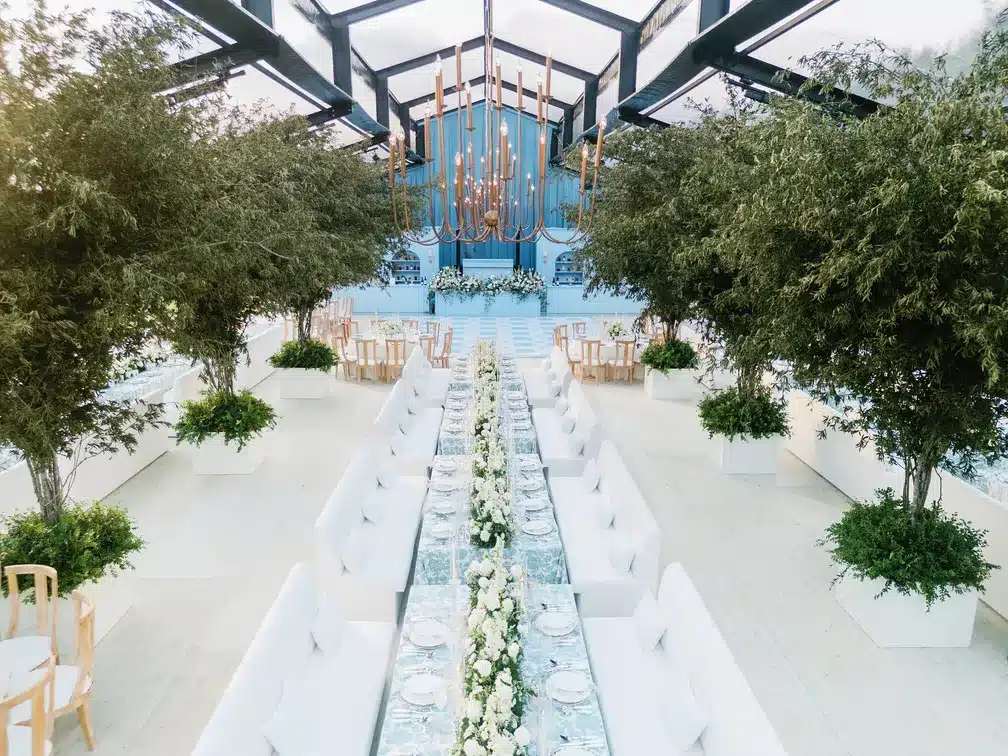
Frame tents are constructed with materials chosen for long-term use, weather resistance, and safety compliance. Their frames are made from high-grade aluminum or steel treated with anti-corrosion coatings, offering strength without added weight. Fabrics are heavy-duty polyester or vinyl that resist UV damage, moisture, and tearing. These tents often include dual-layered fabrics with ventilation mesh and reinforced seams to reduce wear. Compared to Century Pole Tents, the materials used in frame tents provide improved performance and lower maintenance. These choices allow frame tents to remain structurally sound through repeated use in variable outdoor conditions.
Reinforced Frames With Anti-Corrosion Coatings
Frame tents use engineered aluminum or treated steel that resists rust and corrosion even after frequent exposure to moisture. These materials are lighter than wood or untreated steel but deliver greater strength under pressure. Coated surfaces reduce oxidation and keep the tent looking clean and professional over time. The frame’s rigidity helps with alignment and keeps tension evenly distributed across the tent. Compared to Century Pole Tents, which may use basic steel or wooden poles, this construction holds up better in long-term rental cycles. Fewer structural failures and maintenance needs result in smoother installations and safer events.
Weather-Resistant and Durable Tent Fabrics
The canopy fabrics on frame tents are made of polyester or vinyl that’s engineered to block UV rays, repel water, and withstand abrasion. These materials retain their flexibility and color even after prolonged outdoor exposure. Dual-layer fabrics with mesh panels allow heat to escape while keeping moisture out, improving the interior climate for guests. The outer shell often includes coatings that make cleaning easier and resist mold or mildew buildup. In contrast, basic fabrics used on pole tents are more prone to fading, sagging, and damage over time. For event settings where appearance and comfort matter, the difference is clear.
Built-In Safety and Reinforcement Features
Frame tents are designed with reinforced stitching, tension webbing, and fire-retardant coatings to meet modern safety standards. These elements work together to prevent rips, limit movement under stress, and slow flame spread in the unlikely event of a fire. This level of built-in safety is crucial for venues that require compliance with fire codes and wind resistance certifications. The structure remains intact even during quick takedown or reinstallation. Century Pole Tents typically lack this depth of reinforcement, requiring more frequent repairs. Investing in reinforced tents supports both safer usage and longer lifespan across events.
Frequently Asked Questions
How long does it typically take to set up a frame tent?
Setup time depends on the tent size and site conditions, but most frame tents can be installed within a few hours. Skyline Tent Company’s experienced crews ensure efficient setup with precise planning and professional equipment.
Are frame tents suitable for extreme weather conditions?
Frame tents offer strong wind and weather resistance due to their reinforced structure and secure anchoring systems. When properly installed and monitored, they perform well in variable outdoor conditions.
What customization options are available for frame tents?
Frame tents can be customized with sidewalls, clear tops, lighting, flooring, and climate control features. These add-ons help tailor the structure to the style and function of each event.
How do frame tents compare with century pole tents in terms of cost efficiency?
Frame tents may have a higher upfront cost but often save money over time due to easier transport, faster setup, and lower maintenance. Their durability also supports repeated use for long-term value.
What safety features are integrated into frame tent designs?
Frame tents include fire-retardant fabrics, reinforced joints, and stable anchoring systems. Skyline Tent Company ensures that every tent is installed to meet strict safety standards for guest protection and compliance.
Conclusion
When it comes to tent installation for high-end events, frame tents consistently outperform Century Pole Tents in versatility, safety, and performance. Their clear span tent design allows for wide-open event tent layouts that can be fully customized for wedding receptions, seated dinners, and branded activations. With lightweight yet durable tent materials, professional tent anchoring, and reinforced, weather-resistant fabric, they’re built to withstand unpredictable conditions without compromising on elegance.
Planners appreciate the fast tent setup, safe construction, and aesthetic adaptability that frame tents offer. Whether you’re coordinating an intimate backyard wedding or a major outdoor event, choosing the right tent structure is essential. Skyline Tent Company delivers the performance and precision that event planners can rely on.

